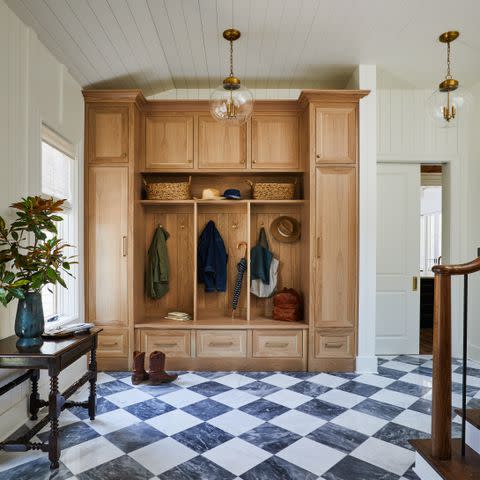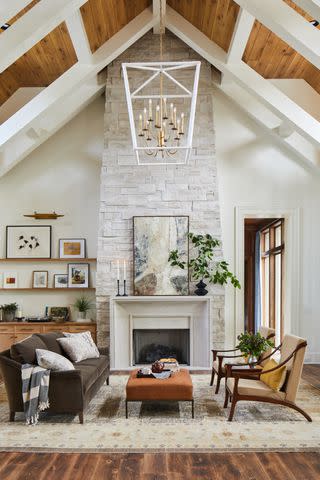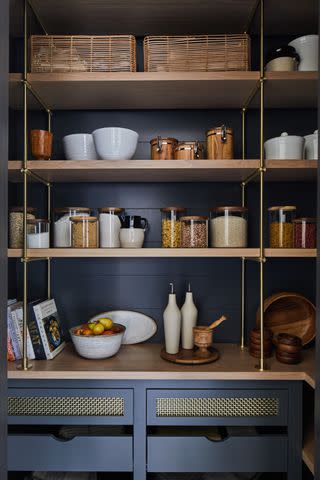6 Designer-Approved Ideas For A More Sustainably Decorated Home
Consider these thoughtful moves when designing your own house.
“I have a catchphrase for myself: Good design is sustainable,” says Laura Hodges, the Catonsville, Maryland, decorator behind our 2023 Southern Living Idea House. “Sustainability isn’t a certain style. It’s a way of designing that is respectful and responsible to the environment and being intentional in the choices that we’re making.” People often assume that sustainable design means decorating exclusively with specific materials, like cork or recycled products, with an end result that all but announces its Earth-friendly nature, but Hodges proves that more planet-conscious choices can be subtle and beautiful too. Here are her go-to moves for a more thoughtfully designed home.
Source Materials Stateside
When it comes to selecting design elements, like marble, consider those found closer to home. For instance, in the Idea House’s kitchen, the decorator chose Imperial Danby marble for the countertops and backsplash. “It’s sourced out of Vermont, so it’s not traveling from overseas,” says Hodges of the more conscious choice. “It’s surprisingly easy to live with. I think people are afraid of staining it, but marble lasts and lasts. The older it gets, the more beautiful it gets, in my opinion.”

Photo: Laurey W. Glenn; Styling: Matthew Gleason
Lean on Natural Light
Minimize the need for energy-guzzling fixtures by maximizing your home’s natural light. “We selected lighter colored materials for the first and second floors of the house so that the natural light is a good source of illumination,” notes Laura. “We don’t necessarily have to rely on artificial light because of dark finishes or heavy window treatments.” That said, curtains are still a smart energy-saving move, if you choose the right ones: Rather than thick drapes, opt for lighter ones that can provide a layer of insulation in the winter months and offer light filtration in warmer, sunnier months.
Prioritize Natural Materials
Whether for finishes or furnishings, consider natural options first, like wool, wood, and cork, as these have a cradle-to-cradle lifespan, says Laura. “This means it has the ability to be turned into something else or reused,” she explains.

Photo: Laurey W. Glenn; Styling: Matthew Gleason
Incorporate Plenty of Vintage Finds
“We always start with vintage,” says Hodges, who sourced antique and vintage furnishings and accessories for nearly every room in the house. “It’s exciting to be able to have unique pieces that are special and well crafted, and it’s more sustainable because they weren’t newly made.” They’re a wise choice on the durability front too, says the designer, who grounded many spaces with hand-knotted vintage rugs from Nashville Rug Gallery: “They’re likely made better than a lot of the ones you’d buy new. If they’ve been around for this long, you’re not going to ruin them.”
Shop with Small Brands and Local Businesses
“Sustainability isn't just about the product itself. It should be about the people [who make the products] and their lifestyle and their health,” says Hodges. That’s why it’s important to shop with companies that are transparent on all fronts, from where they source materials to how they compensate their employees. By shopping with smaller brands and local businesses, you can more easily ensure that their values align with your own. Shopping locally also means that you’re avoiding long-distance shipping (not great for the environment) and pouring money back into your own community (a win-win!).

Photo: Laurey W. Glenn; Styling: Matthew Gleason
Rethink Small-Scale Daily Decisions
If a more sustainable home seems out of reach, Hodges says to begin with “baby steps you can take to be more aware and more intentional.” Consider replacing single-use products with those that can be used multiple times. In the Idea House, for example, Laura opted for reusable absorbent flannel hand towels in the kitchen, rather than paper ones; installed compost stations; and invested in glass food storage for the pantry. “Decanting items into glass containers allows you to purchase items in bulk and not have so much plastic,” she explains.
For more Southern Living news, make sure to sign up for our newsletter!
Read the original article on Southern Living.
